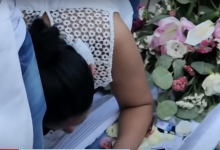Migrants and a Critical Situation in San Diego
It's not that migrants are a novelty for San Diego, a border city. However, the region is accustomed to dealing with hundreds, not tens of thousands, of migrants suddenly appearing in its streets, parks, and other public spaces
3,400 miles
The situation on the southern border is reaching a critical point, and given the political polarization in Washington, there seems to be no light at the end of the tunnel.
On a recent night, as reported by CalMatters, an Ecuadorian migrant was wandering through downtown San Diego, searching for a safe place to sleep. Certainly, this was not what he had imagined experiencing in the great United States of America, after traveling over 3,400 miles.
A group of homeless men mentioned a church where he might receive help. Fortunately, they had space that night. He would stay there for the next 29 nights.
The 23-year-old indicated that he had to leave his country due to the increase in crime and violence, including the murder of presidential candidate Fernando Villavicencio last August.
He explained that the danger to his family increased when his mother, who sold blankets and sheets at a street stall, could no longer afford the extortions imposed by local gang members. The Ecuadorian migrant crossed mountains and rivers in the dangerous Darien Gap between Panama and Colombia. He traversed Central American countries to finally reach Mexico. Almost a month after leaving his family, he surrendered to U.S. immigration officials in El Paso, Texas.
He was processed and spent his first night in a U.S. Customs and Border Protection (CBP) holding cell, known as the «icebox» due to its low temperatures. The next day, he was handcuffed and ordered to board a plane without being told where he was going. Although he thought he was being deported, he was taken to San Diego, a city he had never heard of before. He was released outside the airport and ended up downtown, a few miles away.
Abandoned to their fate
According to officials in San Diego County, from September to November, U.S. border authorities have left over 42,000 migrants on the streets of San Diego County. They are left without direction or assistance, often abandoned at bus and tram stops instead of being transported to places where they can receive help.
The Iris Transit Center in San Diego, where buses and trams converge, is one of three places where border officers have released thousands of migrants since September. There are instances where they are also left in San Ysidro, near the Port of Entry, and in Oceanside, a suburban city north of San Diego.
Some of the most vulnerable migrants, including women, children, disabled individuals, and LGBTQ individuals, were directly released to shelters run by local religious organizations, such as the Jewish Family Service of San Diego and Catholic Charities of the Diocese of San Diego. However, asylum seekers who were not considered vulnerable were often left on the city streets.
Limited resources
It’s not that migrants are a novelty for San Diego, a border city. However, the region is accustomed to dealing with hundreds, not tens of thousands, of migrants suddenly appearing in its streets, parks, and other public spaces.
To address the crisis, the San Diego County Board of Supervisors approved $3 million in October to fund services that provide assistance to migrants. The funds come from what was left of the $650 million that the federal government sent to San Diego County to confront the COVID-19 pandemic.
The $3 million was granted to a nonprofit organization that estimates the money will be depleted by the end of December. Nevertheless, the state helps fund several major nonprofit organizations in San Diego County whose missions include serving migrants.
On the other hand, the U.S. Congress established its Refugee and Services Program in 2022 to fund non-federal entities providing shelter to migrants released by immigration authorities. However, federal funding is insufficient given the monumental demand.
State Senator Steve Padilla, a Democrat from Chula Vista, praised the nonprofit organizations and volunteers helping migrants. «They have been heroes in this struggle,» he told Cal Matters.
Although the state has made millions of dollars available to support asylum seekers, «we need the federal government to enact a comprehensive solution; one that includes significant and lasting immigration reform and provides enhanced processing capacity, better coordination, and the necessary funding to continue and expand California’s humanitarian response,» said Padilla.
This article was supported in whole, or in part, by funds provided by the State of California, administered by the California State Library and the Latino Media Collaborative.



